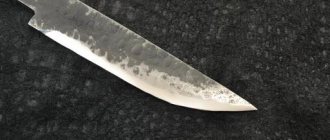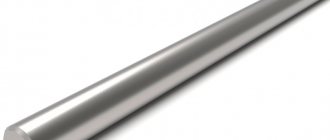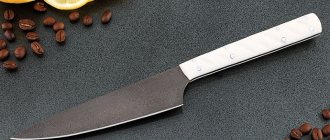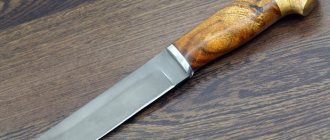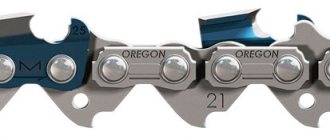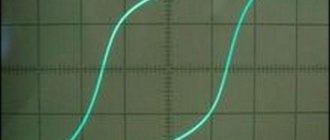Copper alloys have a similar chemical composition, so the external characteristics of bronze and brass are the same. This creates difficulties when it comes to distinguishing between metals. The main reason for the difficulty in identifying a specific alloy is the large number of grades and modifications of compounds. Color often does not immediately reveal the type of alloy, so other ways to distinguish between brass and bronze are needed. Typically, owners need to determine the alloy when selling scrap to the secondary market. Our company accepts brass shavings and bronze scrap metal on favorable terms. We will evaluate the scrap free of charge to accurately identify the composition and grade of the metal, as well as maximum cash payments to customers.
What kind of alloy is this?
Brass is a double or more often multi-component copper-based alloy. The main alloying substance is zinc. In addition, the following can be added: tin, lead, manganese, nickel, iron. According to the metallurgical classification, brass does not belong to bronze alloys.
Brass dates back to ancient Rome, although zinc was only discovered in the 16th century. It was called “orichalk,” which meant “golden copper.” Previously, zinc ore, galmey, was used instead of zinc. An alloy of metallic zinc and copper was first obtained and patented by James Emerson.
The concentration of the base metal, copper, in the alloy is 56–67%. Brass may contain about 2.5% lead, the rest is zinc. In this condition, brass is now rarely used for making coins. In ancient Rome, coins were minted from brass, although these were most likely alloys similar to brass. In addition, brass coins were found in China, the GDR, and Bulgaria.
The alloy based on copper and zinc is not magnetic. But there are some subtypes of coins that look like brass, but at the same time have magnetic properties:
- Recently, some countries have used an alloy of copper and zinc with the addition of nickel to create coins. Since nickel is ferromagnetic, such a coin will still be attracted to the magnet.
- Making coins from non-ferrous metals is not a cheap pleasure, but somehow you need to make coins of different colors, including yellow, so sputtering is often used. For example, brass is applied to a steel coin. Such a coin is magnetic, but at the same time has the appearance of brass.
There is another method for obtaining magnetic coins. Brass becomes magnetic if a ferromagnetic substance, most often iron or nickel, gets into it during the manufacture of the alloy. It happens that this happened by mistake and, interestingly, such coins often have a high value. For example, some coins made in the USSR and Russia had properties that were different from the main batch, and now a copy of such a coin is expensive.
Rarely, the name brass also refers to other copper-based alloys. For example, a copper-nickel alloy, which, of course, will be magnetic. A variety of this alloy is cupronickel, used for making cutlery. In fact, calling it brass is not entirely correct, but such usage does occur.
Chemical composition and features of the internal structure
To have a good understanding of the characteristics of brass, it is important to understand what properties the chemical elements of which it is composed have. Such elements, as mentioned above, are copper and zinc
Classification of brasses by chemical composition
Copper is one of the first metals that man began to use for the manufacture of products for various purposes. This element, which is included in the 11th group of the IV period of the periodic table, has atomic number 29 and is designated as Cu (short for Cuprum). Copper, which is a transition metal, is highly ductile and has a beautiful light golden color. When an oxide film forms, the metal acquires an equally beautiful yellowish-red hue.
Zinc, the second main element in the chemical composition of brass, is also a metal that, unlike copper, does not occur in nature in its pure form. Zinc, having atomic number 30, is included in the secondary subgroup of the 2nd group of the IV period of the periodic table. This metal, which began to be produced in the 12th century in India, is highly brittle under normal conditions. Without the oxide film that appears on the metal when it interacts with open air, its surface has a light blue color. This metal is designated by the symbol Zn (short for Zincum).
This is what the microstructure of a polished brass surface looks like under 400x magnification.
The structure of brass, depending on the content of the main components in its composition, can consist of one α-phase or simultaneously α+β-phases. The states that the internal structure of the alloy can assume are distinguished by the following features:
- α-phase is a solution of copper and zinc, characterized by high stability, in which the molecules of the base metal (copper) have a face-centered cubic lattice;
- The α+β phase is also a stable solution in which copper and zinc are contained in a ratio of 3:2 (in such a solution, copper molecules have a simple unit cell).
The microstructure of α + β-brass has less ductility and greater hardness than the structure of α-brass
Depending on the heating temperature, the following structural transformations occur in brass.
- When brass is heated to high temperatures, the atoms in its β-phase, which has a wide range of homogeneity, are characterized by a disordered arrangement. In this heating state, the β-phase of the brass alloy is highly ductile.
- When a brass alloy is slightly heated (454–468 °
), a phase designated β' is formed in it. A feature of this structural phase, which is characterized by high hardness and, accordingly, brittleness, is that the copper and zinc atoms in it are arranged in an orderly manner.
The ductility of brasses with a two-phase structure can be increased if they are heated above the temperature at which the β'-transformation occurs (700°
).
In this state, only one β-phase predominates in the structure of the alloy; accordingly, it is characterized by high plasticity. However, even single-phase brasses with good ductility can practically not be processed by plastic deformation methods. This occurs in the temperature range of their heating to 300–700 °
, which is called the brittleness zone.
The zinc content in brass affects the electrical conductivity of the alloy
The mechanical properties of brass of a particular grade are significantly influenced by the zinc content in its chemical composition. So, if the content of this chemical element is up to 30%, then both the strength and ductility of the alloy increase at the same time. A further increase in the zinc content leads to the fact that brass becomes less ductile (complication of the α-phase), and then more brittle (formation of the β'-phase in the brass structure). The strength of brass increases until its composition contains 45% zinc; with a further increase in the amount of this element, brass becomes both less strong and less ductile.
Nickel brass
Nickel brass is a copper-zinc alloy whose main alloying element is nickel. The latter has properties that significantly improve the performance of brass. It makes the alloy less susceptible to corrosion and refines the grain.
In industry, brass grade LN65-5 is often used. It contains 64-67% copper and 5-6% nickel, the rest is zinc. Impurities are allowed, the amount of which should not exceed 0.3%. It has increased mechanical properties, wear resistance, and can be processed. It is used to make condenser tubes for marine vessels, pressure gauges, and so on. There is another common alloy that contains 12-14% nickel, 26-30% zinc and 56-62% copper.
Distribution of paramagnets and diamagnets in the periodic table of Mendeleev elements
The magnetic properties of simple substances change periodically with increasing atomic number of the element.
Substances that are not attracted to magnets (diamagnets) are located mainly in short periods - 1, 2, 3. Which metals are not magnetic? These are lithium and beryllium, and sodium, magnesium and aluminum are already classified as paramagnetic.
Substances that are attracted to magnets (paramagnets) are located mainly in the long periods of the Mendeleev periodic system - 4, 5, 6, 7.
However, the last 8 elements in each long period are also diamagnetic.
In addition, three elements are distinguished - carbon, oxygen and tin, the magnetic properties of which are different for different allotropic modifications.
How to clean brass coins?
Like any other coin in numismatics, they need to be stored very carefully. Coins made from brass often show clouding, darkening, black, green or blue spots. All these are traces of external influences that need to be gotten rid of in order for the product to acquire its original appearance. How to clean brass products?
One of the most common cleaning methods is electrolysis. However, it is worth cautioning that a common side effect of using this cleaning on a copper-zinc alloy is a change in the color of the coin and the appearance of a copper tint. Particular attention should be paid to fixing the coin during cleaning, since if it touches the electrode, a short circuit may occur and the coin may become chipped. You can use a soda solution as an electrolyte, and a car battery will serve as the current source. The coin is attached to the negative charge, and a stainless steel electrode is attached to the positive charge. In five minutes, the coin is completely cleaned; you can then wipe it with a soda-based cleaning agent, but strong mechanical impact is not recommended.
Ammonia dissolves oxides and traces of corrosion on copper-zinc coins well. You just need to know that it is often used not only for cleaning coins containing copper, but also for patination. So after removing the coin from the solution, you should rinse it thoroughly.
Trilon B can also be used to clean brass coins. This solution removes all oxides and does not interact with the alloy from which the coin is made. Even if a coin is left in a solution of this substance for a long time, its color will not change and it will not be destroyed in any way. If the oxides stick quite firmly to the surface of the coin, then instead of significantly increasing the exposure time, you can simply warm up the solution a little.
The abrasive cleaning method is not suitable for coins that will be sold and have a high value. However, to add shine to a modern coin in a collection, it will do the job. For this, it is best to use GOI paste. Polishing can be done with a portable engraver. One more thing about this method: it cannot be used to clean coins with fine design details.
It's not common to find coins or other collectibles made of brass these days. But if they still have magnetic properties, this does not mean that they are made of any other alloy, although this may indicate surface application. Brass is not magnetic if there is little or no nickel or iron in its composition.
Collectors and numismatists often wonder: is brass magnetic or not? The fact is that this alloy is often used in the manufacture of coins. But it is quite difficult to evaluate found specimens using a magnet, because not all brass is magnetic.
Brass or nickel-plated cup holders Choose
For lovers of traditional tea drinking and collectors, a glass holder is of great importance. This attribute has become a wide field for the activities of folk craftsmen and a kind of historical carrier of alternating eras. Starting from pre-revolutionary Russia to the present day, it is possible to build a whole chronicle of significant events reflected in the minting, engraving and casting on glass holders of different times.
Coasters with handles for glasses made of precious metals were mainly made to order and belonged to noble dynasties. Brass cup holders, which appeared earlier than others, became more affordable products. Durable and flexible material, resistant to corrosion, in the hands of experienced craftsmen turned into a real work of art. Somewhat later, the development of technology made it possible to produce stands made of stainless steel with a protective and at the same time decorative nickel coating. Nickel-plated cup holders symbolized the Soviet era, although brass continued to be a popular material and was also embodied in propaganda forms.
Brass or nickel plated cup holders – which is better?
Brass and brass cup holders
At that time, brass was obtained by alloying copper and zinc ore, given that zinc was discovered only in the 16th century. ad. The first brass contained a lot of foreign impurities, but its strength and external similarity to gold aroused interest. In 116-117, during the time of Augustus, the alloy was used by the Romans, minting coins from it. Because of its golden sparkle, the metal was named orichalcum, which literally meant golden copper.
The metal that we are used to seeing was obtained only in 1781 by the British scientist James Emerson. Currently, more than 60 grades are produced and used in industry, each of which differs in the composition of alloying substances and properties.
Brass L 63 has the greatest artistic value. Along with its high ductility, flexibility to cold working by pressure, rolling and embossing, this brand is highly polished, acquiring a luster that is visually indistinguishable from gold.
The only drawback is the gradual oxidation of the surface, so over time the material darkens and acquires a greenish tint. But the original appearance of a brass product is easily restored with the help of re-polishing.
Brass coasters have a wider historical range. In addition, you can buy a rare brass glass holder belonging to an earlier period in various themes and shapes.
Nickel and nickel plated cup holders
The first samples of nickel were obtained in 1751 by the Swedish mineralogist Kronstedt. Long before this, Saxon miners, while mining copper, often encountered ore similar to copper, but all attempts to smelt the metal from it failed. For a long time, red nickel pyrite was used only for coloring glass by local glassmakers.
The properties of nickel resemble iron, but its ductility and white silver color immediately attracted attention. In addition, due to the tendency of the metal to naturally passivate, the shine was maintained and did not darken over time.
The metal also turned out to be susceptible to polishing, acquiring a mirror-like surface, which added artistic value to it. Today, nickel is widely used in many modern industries. The element is most in demand as an alloying component in the production of stainless steels. Approximately 7% of the nickel produced is used to coat other metals (nickel plating).
Nickel-plated cup holders have a steel base, so they are more practical and durable. Moreover, the appearance of the products is almost timeless. Perhaps nickel plated cup holders are not as antique as brass ones. However, these tea attributes have high historical value and have the exceptional ability to momentarily return to a time when dreams seemed reality and all roads were open.
What kind of alloy is this?
Brass alloys and compounds like them have been used for coinage since ancient Roman times. The material was also popular in China, Bulgaria and the German Democratic Republic.
Brass is diamagnetic - alloys that are pushed out of a magnetic field. It is created on the basis of copper (56-67%) with the addition of zinc. The following can also be used as a ligature:
Brass should not be confused with other copper-zinc alloys. Only a compound with the above proportions of base metals is considered brass. If the ratio of alloying and base components is different, the alloy is called copper-zinc, not brass. For example, a similar connection was used to mint Soviet coins in denominations of 1, 3 and 5 kopecks from 1961 to 1991.
Brass alloy production technology
Since the main part of brass is copper, the composition is attributed to copper alloys. The manufacturing method is quite simple. But the technological process itself is complex and labor-intensive, requiring special processing of raw materials and compliance with high temperature conditions.
In the production of brass, technologies from the copper and zinc industries are used. Different types of melting furnaces are adapted for smelting. More often, factories use electrical induction equipment with a magnetic core. An obligatory element is a hood, since when heated, elements dangerous to humans are produced.
Alloy production scheme:
- Melting copper in special crucibles;
- Addition of zinc;
- Introduction of minor components;
- Pouring into molds to produce foundry brass;
- Hardening by stamping or drawing methods.
Nickel brass
Nickel-containing brass (NBR) was developed for electrical connectors, as a replacement for expensive silver plating. It is resistant to corrosion, abrasion, and has low transient resistance. The alloy has increased mechanical properties, but is well processed by pressure in cold and hot states.
Nickel brass is used for the minting of modern coins in many countries. In addition, the main areas of its application include the production of:
- pressure tubes;
- condenser tubes for legal proceedings;
- meshes for papermaking machines.
Externally, nickel brass can be confused with ferrous bronze (BRAZH). It is these two alloys that are usually tried to be distinguished by magnetic testing. This method has no scientific justification, since the magnetic properties do not depend on the basic components of the alloy (copper with zinc for brass or copper with tin for bronze), but on alloying additives (nickel, iron) and their proportions. The ligature varies depending on the specific brand.
Best answers
Vladimir Chudentsov:
Actually, faucets are not made from chrome. They are only coated with a thin layer of chrome. And the faucets themselves are made of brass (an alloy) or copper (now very rare). So if they tell you that the faucet is entirely made of chrome, then most likely they are deceiving you. It would be fragile and obscenely expensive.
SEVER velloris:
to be precise, the only coating from LS59 is chrome
Evgeny Levichev:
A normal manufacturer is made from brass without using the powder method (there is such a thing) And especially cunning, narrow-eyed manufacturers are made from silumin (and for weight they manage to stuff steel in there so that it weighs like brass), and of course chrome is a must as a coating.
Tips and warnings
Experienced specialists distinguish nickel brass from ferrous bronze by the color of the chips in direct sunlight: brass will have a greenish tint, bronze will have a yellowish-reddish tint. An even more accurate result is obtained by spectral analysis of chemical compounds. Everything else is myths and speculation.
Copper alloys have a similar chemical composition, so the external characteristics of bronze and brass are the same. This creates difficulties when it comes to distinguishing between metals. The main reason for the difficulty in identifying a specific alloy is the large number of grades and modifications of compounds. Color often does not immediately reveal the type of alloy, so other ways to distinguish between brass and bronze are needed. Typically, owners need to determine the alloy when selling scrap to the secondary market. Our company accepts brass shavings and bronze scrap metal on favorable terms. We will evaluate the scrap free of charge to accurately identify the composition and grade of the metal, as well as maximum cash payments to customers.
Comparative characteristics
The basis of bronze and brass, as mentioned above, is the same metal - copper.
The difference between these alloys lies in their chemical composition and, accordingly, in the characteristics that they possess. Naturally, the differences between these copper alloys also determine their areas of application. Due to the fact that bronze is a stronger and more durable material when compared with brass, bells, sculptural compositions, elements of fencing, landscape and interior structures have been made from this material since ancient times. It is also important that many grades of this alloy are characterized by good fluidity in the molten state. This makes it possible to cast products of even very complex configurations from them. By adding various chemical elements to the chemical composition of bronze, you can change its color in a fairly wide range, which is also of great importance in the production of decorative products.
This watch ring, judging by the color, is more likely yellow brass (bronze would be redder). Scratches easily remain on the surface - also a sign of brass
Brass differs from bronze in its higher ductility and, accordingly, lower strength and wear resistance, which limits the use of this alloy in many areas. In addition, brass is less resistant to aggressive environments, in particular salty sea water, which does not allow the use of brass products in shipbuilding, where bronze is used very actively and successfully.
There is also a noticeable difference in the color of these alloys and in their internal structure. Any experienced specialist can tell you how to distinguish brass from bronze: to do this, just look at the fracture of products made from these alloys. Brass has a lighter color when fractured and a distinct fine-grained structure, while bronze is easily identified by its dark brown fracture color and coarse-grained internal structure.
Broken bronze coupling
- The main alloying element in bronze is tin, and in brass it is zinc. Moreover, both alloys are created on the basis of one metal – copper.
- Bronze (even with a classic chemical composition) perfectly resists the effects of aggressive environments, in particular salty sea water. In order to improve the corrosion resistance of brass, additional alloying elements must be introduced into such an alloy.
- The strength and anti-friction characteristics of bronze are also better than those of brass. Such qualities significantly expand the scope of which not only strong and durable decorative elements are made, but also critical parts for use in various industries. Brass is more often used for the production of bimetallic elements (“steel - brass”), which demonstrate high resistance to the formation and development of corrosion processes.
- Bronze products have a dark brown color and coarse grain when broken, while brass products have a yellow-golden color and a fine-grained structure. This difference in color and internal structure makes it easy to determine what alloy the product is made from.
- Bronze, like brass, although they are based on a metal such as copper, are divided into completely different categories. Thus, bronze can be tin or tin-free, while brass can be two- or multi-component.
Comparison of properties of brass and bronze
Bronze and brass, which have a lower melting point than copper, can be used to make various products at home. However, for this, naturally, it is necessary to stock up on the appropriate equipment and thoroughly study the technology and rules for performing such a technological operation as casting.
Methods for visually identifying an alloy
Brass is made using an alloying component - zinc or tin. Their content is in the range of 4-45%. Bronze is a multicomponent alloy, including a large number of non-metallic components. The alloying element of bronze alloys can be several substances at once: magnesium, aluminum, silicon, beryllium or manganese. In both alloys, the amount of copper is limited to 60-90%, so it is difficult to distinguish between bronze and brass externally. Based on external properties, it is worth noting the following characteristics of specific alloys:
- Bronze. A number of grades of this metal contain a large amount of lead, which gives the alloy white-silver shades. With the maximum amount of copper present (about 90%), bronze is similar to copper, having reddish-brown hues.
- Brass. The zinc, tin or nickel content almost always contributes to the formation of a yellow-golden alloy. Brass compositions are closest in color to pure gold. However, such shades are obtained only if GOST is observed in production.
Bronze alloy price
Modern metallurgical plants and enterprises increasingly prefer to use recycling of recycled materials to further obtain bronze from it, rather than mining directly from mines. This is due to greater economic efficiency. It is cheaper to melt existing bronze than to develop new deposits. This is the reason for the constant opening of scrap metal collection points. It remains to understand how prices for bronze scrap are formed.
There are several criteria by which the cost of a bronze alloy is determined:
- Chemical composition. The more the alloy contains scarce and, accordingly, expensive metals in its composition, the higher the price of bronze. These include copper, tin, beryllium. The content of aluminum, silicon and zinc, on the contrary, leads to cheaper bronze.
- The shape of the scrap, i.e. In what form is bronze supplied: mesh, wire, shavings, sheet.
- Impurity content and appearance. The presence of semi-solids and impurities such as sulfur, hydrogen, phosphorus (over 0.5%) on the surface of bronze alloys negatively affects the cost of scrap.
- Scope of delivery. In general, the metal picker gives preference to working with scrap weighing over 1 ton. Therefore, the larger the batch, the higher the price of bronze.
- Location of the reception point. Different regions have different prices for bronze. This is due to the relationship between supply and demand in a particular region of Russia.
All of the above is taken into account in the state standard GOST 1639-93. According to it, scrap bronze alloys are divided into the following categories (the approximate cost per kg is indicated in brackets):
- Scrap A-11-1. Presented in bronze in the form of pieces measuring no more than 5x5 cm. Clogging in the alloy is up to 3%. (250 rub.)
- Scrap A-11-2. The copper content in alloys is not less than 80%. Supplied in pieces no larger than 5x5 cm. In the composition of this recycled bronze material, the admixture should not exceed 7%. (230 rub.)
- Scrap A-11-3. includes at least 70% copper, and clogging in the alloy is no more than 7%. (200 rub.)
Such a high cost of the alloy is associated with the depletion of copper ores. According to various experts, they should completely end in 80-100 years. Depletion of copper ores, in turn, leads to an increase in the cost of technology and drilling equipment. The deeper the ore, the harder it is to “get it out” from there.
Proof of all of the above is the value of quotes on non-ferrous metals exchanges, which have been constantly growing upward since mid-2015.
Physical properties
Bronze is an alloy of copper with metals such as tin, aluminum, silicon, etc. The exceptions are brass (an alloy of copper and zinc) and cupronickel (an alloy of copper and nickel).
The metal cannot be heat treated (except beryllium). Mechanical properties are completely determined by the chemical composition and structure. Bronze alloys have lower elasticity (9000-12000 kg/mm2) compared to steel.
The friction coefficient of almost all bronzes is the same. Density ranges from 7500-9100 kg/m3. Melting point 880-1060 ºС. Bronze does not transmit heat well. Its thermal conductivity coefficient is 0.1-0.2 cal/cmsC. Electrical conductivity is significantly inferior to copper. The electrical resistivity value of the bronze alloy is 0.1-0.17 µOhm*m.
The bronze alloy develops a patina on its surface. It is this that serves to protect bronze from further destruction and reduces the corrosion rate to 0.0015 mm per year.
Rating: /5 — votes
How to distinguish bronze from brass using a magnet?
This method will not provide accurate information. However, according to physical laws, not all metals have magnetic properties. In brass and bronze, only iron and nickel are attracted by a magnet. These metals are present mainly in bronze alloys of the BrAZH, BrAZHN and similar brands. However, the percentage of iron and nickel in the composition is quite small (about 7-11%), so the experiment can only be carried out using a powerful magnet. In brass, the volume of metals with magnetic properties is only 1-3%. This is why bronze is more easily attracted to a magnet, but it is difficult to get an exact answer, and the method is not suitable for all brands of alloys.
Magnetic properties
Each atom has a quantity called a total magnetic moment, which is determined by the movement of electrons along their orbit. The magnetic moment determines the amount of susceptibility of a substance to a magnetic field. All metals are divided into three groups:
- Diamagnets are substances with negative magnetic susceptibility, i.e. they do not magnetize. These include: zinc, gold, copper and others.
- Paramagnetic materials have a positive magnetic susceptibility value, but not high. These are magnesium, platinum, chromium, aluminum and others. They are magnetic, but weakly.
- Ferromagnets are substances that have a strong susceptibility to a magnetic field. These include: nickel, cobalt, iron, some rare earth metals, iron alloys and others.
Copper in the periodic table
Detection of brass and bronze by heat treatment
If you have equipment or instruments capable of producing temperatures in the range of 600-650 o C, you can try to determine the alloy by heating the metals. The method is applicable to brass because it contains zinc. When exposed to this temperature, zinc undergoes oxidation. As a result of the process, oxide (an ash-colored coating) is formed on the surface of the brass product. Also, the brass alloy itself will become more ductile, so it will not break under heavy loads, but will simply bend. Bronze at temperatures up to 650 o C will simply heat up without changing its physical properties. The method is also applicable only for brass alloys in which the alloying component is zinc, so it is easy to make a mistake if it is not present in the composition.
Methods for chemical determination of alloys
Chemistry is a fairly effective way to identify brass and bronze. However, accurate results can only be obtained by reactions that destroy the metal, which will negatively affect the product. The chemical method includes the following steps:
- chips are removed from the copper alloy (so as not to damage the entire metal);
- mix a solution of nitric acid and water (in a ratio of 1:1);
- Next, you should place the chips in an acidic reagent;
- the solution is heated to boiling point after the chips are dissolved;
- The boiling temperature is maintained over low heat for half an hour.
If the shavings were brass, the solution in the container will remain transparent. When bronze dissolves, a tin precipitate (white) precipitates. Taking this into account, the method only works for bronze containing tin.
Paramagnets and ferromagnets
Let's consider the option when each atom of a substance has its own magnetic field. These fields are multidirectional and compensate each other. If you place a magnet next to such a substance, the fields will be oriented in one direction. The substance will have a magnetic field, a positive and a negative pole. Then the substance will be attracted to the magnet and can itself become magnetized, that is, it will attract other metal objects. For example, you can magnetize steel clips at home. Each one will have a negative and a positive pole, and you can even hang a whole chain of paper clips on a magnet. Such substances are called paramagnetic.
Ferromagnets are a small group of substances that are attracted to magnets and are easily magnetized even in a weak field.


